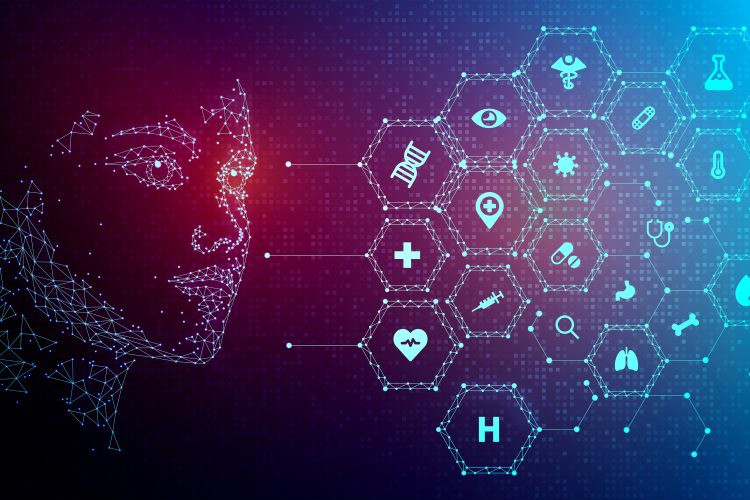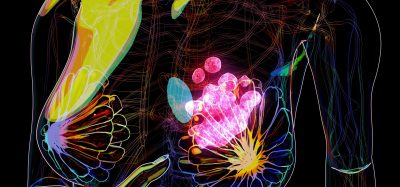AI and the future of biomarker analysis in early R&D
Posted: 14 November 2025 | Sepp De Raedt (Chief Technology Officer & Co-founder - DoMore Diagnostics) | No comments yet
AI is transforming biomarker analysis in early drug discovery, revealing hidden biological patterns that improve target discovery, patient selection and trial design for more precise and predictive R&D.


Artificial Intelligence (AI) is radically changing the pharmaceutical industry. After decades of relying on traditional biomarkers and statistical models to inform early-stage research, AI is beginning to reshape the way we discover targets, stratify patients and design clinical trials. This is especially evident in the analysis of disease biomarkers, which can inform our understanding of the development, progression and treatment of disease. AI-driven pathology tools and biomarker analysis can give deeper biological insights and help clinical decision-making in fields as diverse as oncology, where the lack of reliable biomarkers to personalise treatment remains a major challenge.
At DoMore Diagnostics, we use AI to map biomarkers that predict cancer outcomes and identify which patients are most likely to benefit from therapies such as adjuvant chemotherapy.
The use of biomarkers in drug discovery: how things have changed
Biomarkers have long been essential for understanding disease mechanisms, identifying drug targets and monitoring therapeutic response. Historically, biomarker analysis has focused on relatively simple markers – such as gene mutations, protein expression or histological features – measured through standard laboratory assays. In recent years, however, the complexity of biomarker science has grown exponentially. High-throughput sequencing, multi-omics datasets and advanced imaging generate unprecedented volumes of data, offering richer but also more complex views of disease biology.
The challenge now is interpreting this vast amount of complex data in a reproducible and clinically meaningful way. This is where AI makes a real impact, uncovering hidden patterns in vast datasets to reveal deeper, more connected insights into disease biology. In practice, this allows prediction of how a person will respond to therapy and supports more personalised treatment decisions.
It’s clear the horizons of biomarker analysis are expanding with AI, however, where can we deploy them to make the most impact in early R&D?
Biomarkers and AI for patient stratification
The heterogeneity of human disease is one of the biggest hurdles in drug development. Failure to account for biological variability often leads to poor translation of preclinical findings into clinical benefit.
Biomarker-driven patient stratification, which groups patients by disease characteristics or likely treatment response, is key to ensuring that the right patients are studied. This helps reduce attrition rates by better matching therapies to patients and reduces the risk of failure in later stages. For example, oncology drug developers increasingly rely on AI to stratify tumours based on immune infiltration or digital histopathology features. These insights are also invaluable in determining which clinical populations should be prioritised for early trials.
Designing biomarker-led clinical trials
Biomarker-guided trial design is already reshaping clinical development. Basket trials, adaptive designs and umbrella studies all rely on biomarkers to match patients to therapies more effectively. Yet the process of designing these trials remains complex, requiring large-scale data integration and predictive modelling.
AI-driven biomarker analysis can improve trial design in more ways than simple patient stratification.
- Enriched study designs that adapt based on emerging biomarker insights can boost trial power and lower costs over time.
- Detecting early efficacy signals from biomarker responses enables faster go/no-go decisions.
Deploying AI and biomarkers in target discovery
One of the most exciting applications of AI biomarker analysis is in target discovery. Drug development begins with the identification of molecular targets that are causally linked to disease. Yet, the majority of discovered targets fail to translate into safe and effective drugs. AI can improve these odds by integrating multi-modal data. AI models can combine genomic, proteomic, transcriptomic and histopathology data to reveal new relationships between biomarkers and disease pathways. By uncovering hidden patterns, for example, subtle features in tumour microenvironments, immune responses or molecular interactions – AI systems can exceed human observational capacity and improve reproducibility.
One of the most exciting applications of AI biomarker analysis is in target discovery.
AI enables more consistent hypothesis generation through its ability to utilise vast datasets at scale, and collate multiple modes, markers and data at once. At DoMore Diagnostics, our work in digital pathology highlights how AI can uncover prognostic and predictive signals in standard histology slides that outperform established molecular and morphological markers. The ability to detect such signals early could support the identification of more robust therapeutic targets, giving R&D teams higher confidence before committing themselves to costly preclinical programmes.
The challenges of regulation and trust
While the promise of AI biomarker analysis is clear, the path to widespread adoption remains challenging. Key hurdles include regulatory alignment, as validation within frameworks such as MDR and IVDR is still evolving, and data quality and standardisation, since AI models rely on large, diverse datasets to avoid bias and ensure generalisability.
Clinical adoption also remains a key hurdle. Pathologists, clinicians and trial sponsors need to trust that AI-generated biomarkers are reproducible, interpretable and clinically actionable. In our work, we prioritise strong clinical collaborations, such as studies with national cancer registries and hospitals, to ensure our AI-based pathology tools are validated in real-world settings using large, diverse datasets. This approach not only strengthens validation but also fosters confidence among end-users.
Collaboration in early R&D stages: hospitals, researchers and data scientists
The integration of AI biomarker analysis into early R&D will not happen in isolation as it requires collaboration across the entire ecosystem. Pharma and biotech companies must invest in data infrastructure and AI partnerships, and academic researchers should provide translational insights that bridge preclinical and clinical biology. Regulators need to evolve frameworks that foster innovation while ensuring patient safety and technology providers like DoMore Diagnostics must continue developing tools that make biomarker analysis more accurate, accessible, and clinically relevant.
The integration of AI biomarker analysis into early R&D will not happen in isolation as it requires collaboration across the entire ecosystem.
As AI biomarker analysis advances, early R&D will become more precise, efficient and patient-centred. Deeper biological insights will drive target discovery, preclinical studies will better reflect real-world diversity, and biomarker-led trials will reduce attrition and accelerate new treatments. The future of drug discovery lies in embracing complexity and AI enables us to translate that complexity into actionable knowledge, leading to therapies that are more effective and truly tailored to patients.
References:
- Skrede OJ, De Raedt S, Kleppe A, et al. Deep learning for prediction of colorectal cancer outcome: a discovery and validation study. Lancet. 2020;395(10221):350–60. doi:10.1016/S0140-6736(19)32998-8.
- DoMore Diagnostics. Histotype Px®: AI-based digital biomarker for colorectal cancer prognosis [Internet]. Oslo: DoMore Diagnostics; 2025 [cited 2025 Sep]. Available from: https://www.domorediagnostics.com/histotype-px
- S. Food and Drug Administration. Biomarker Qualification: Evidentiary Framework [Internet]. Silver Spring (MD): FDA; 2025 [cited 2025 Sep]. Available from: https://www.fda.gov/media/119271/download
- European Medicines Agency. Guideline on the use of biomarkers in the context of drug development [Internet]. Amsterdam: EMA; 2025 [cited 2025 Sep]. Available from: https://www.ema.europa.eu/en
Meet the author
Sepp De Raedt, Chief Technology Officer (CTO) & Co-founder, DoMore Diagnostics


Related topics
Analysis, Artificial Intelligence, Assays, Biomarkers, Cancer research, Computational techniques, Drug Discovery, Drug Discovery Processes, Machine learning, Oncology, Pathology & Molecular Medicine, Precision Medicine, Research & Development, Translational Science
Related organisations
DoMore Diagnostics








